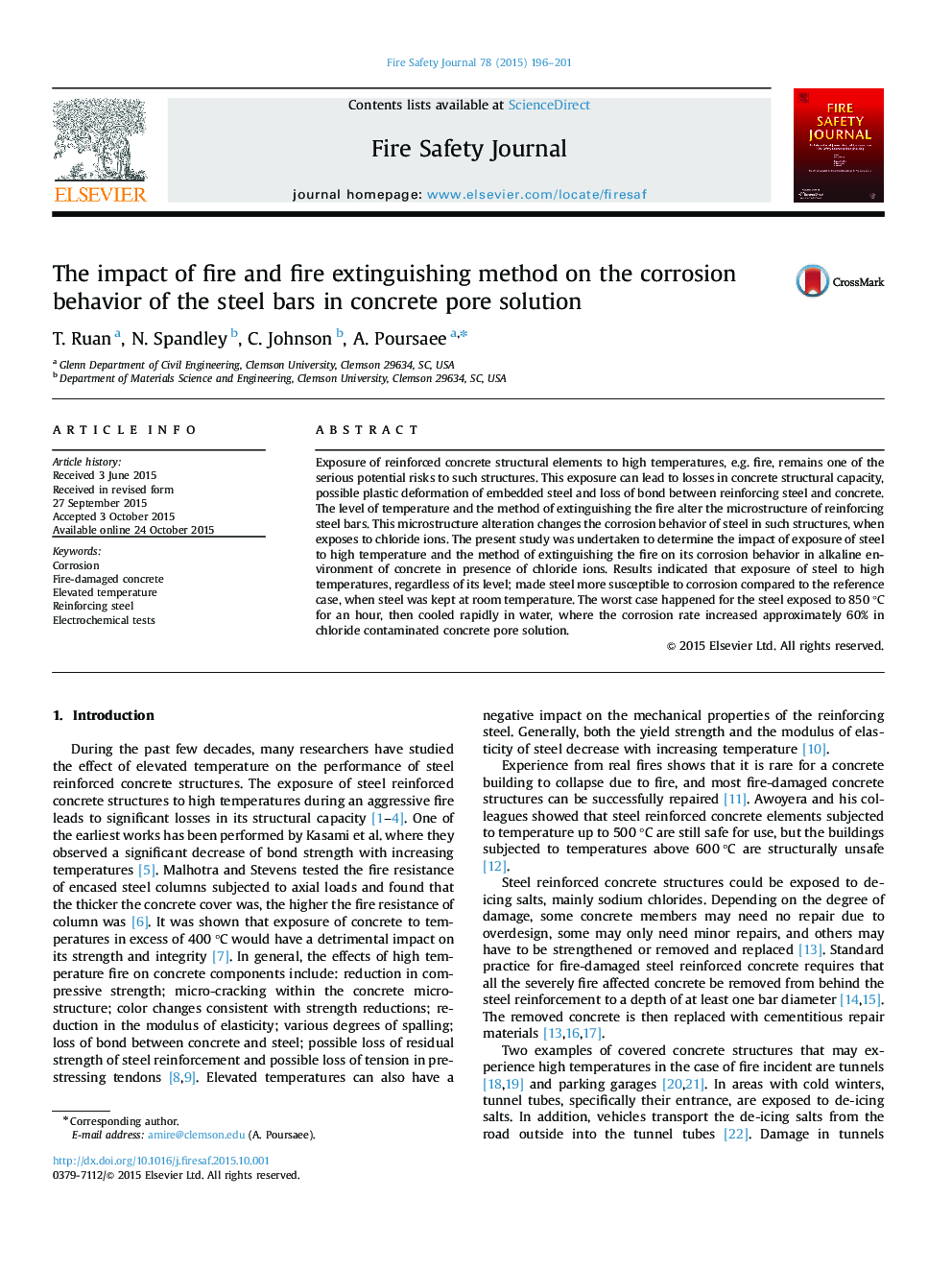| کد مقاله | کد نشریه | سال انتشار | مقاله انگلیسی | نسخه تمام متن |
|---|---|---|---|---|
| 269743 | 504698 | 2015 | 6 صفحه PDF | دانلود رایگان |
• Exposing the steel bars to high temperatures increases their corrosion activity.
• Cooling method can change the corrosion rate of steel.
• The corrosion rate increased 60% for steel exposed to 850 °C and water cooled.
Exposure of reinforced concrete structural elements to high temperatures, e.g. fire, remains one of the serious potential risks to such structures. This exposure can lead to losses in concrete structural capacity, possible plastic deformation of embedded steel and loss of bond between reinforcing steel and concrete. The level of temperature and the method of extinguishing the fire alter the microstructure of reinforcing steel bars. This microstructure alteration changes the corrosion behavior of steel in such structures, when exposes to chloride ions. The present study was undertaken to determine the impact of exposure of steel to high temperature and the method of extinguishing the fire on its corrosion behavior in alkaline environment of concrete in presence of chloride ions. Results indicated that exposure of steel to high temperatures, regardless of its level; made steel more susceptible to corrosion compared to the reference case, when steel was kept at room temperature. The worst case happened for the steel exposed to 850 °C for an hour, then cooled rapidly in water, where the corrosion rate increased approximately 60% in chloride contaminated concrete pore solution.
Journal: Fire Safety Journal - Volume 78, November 2015, Pages 196–201
